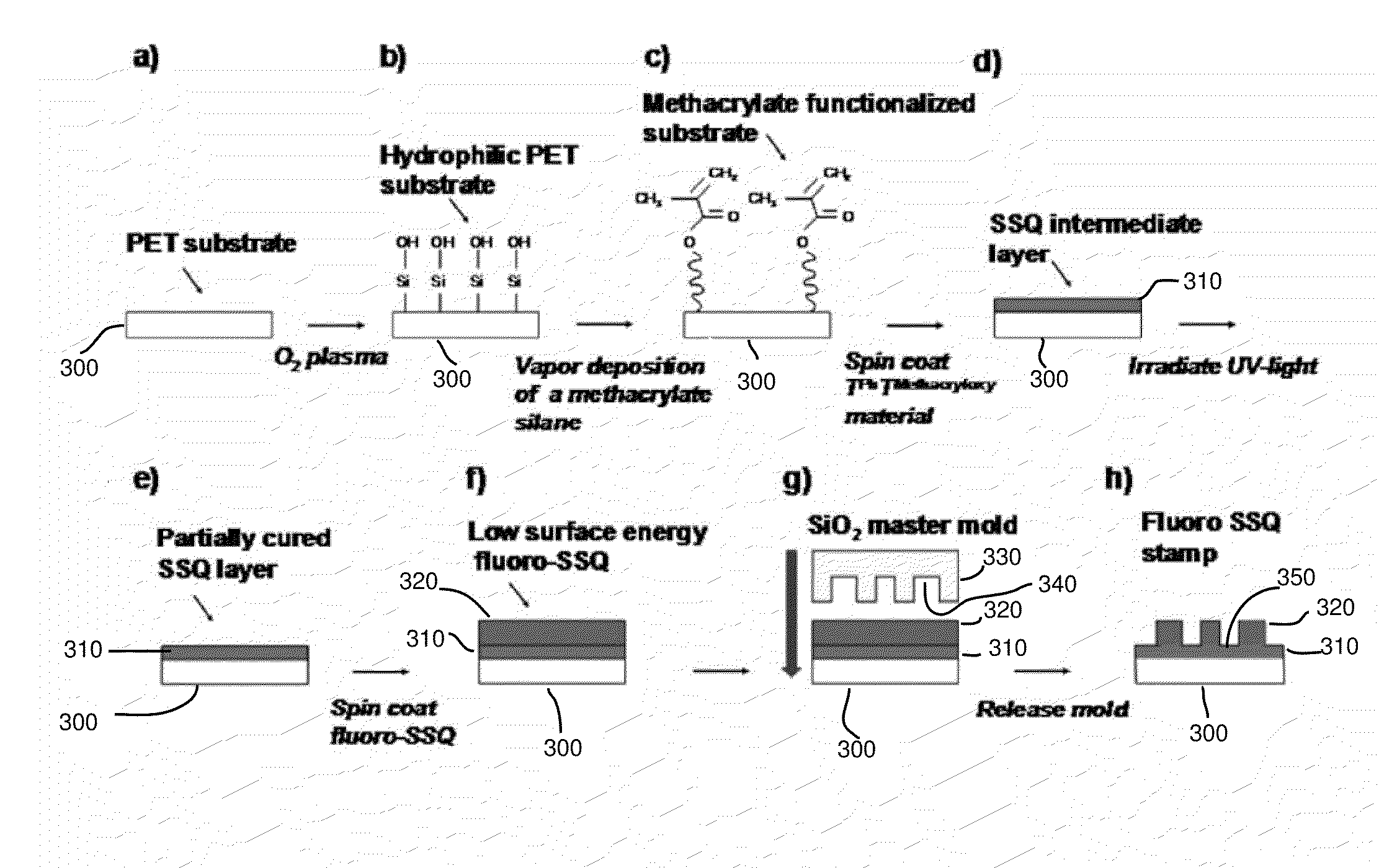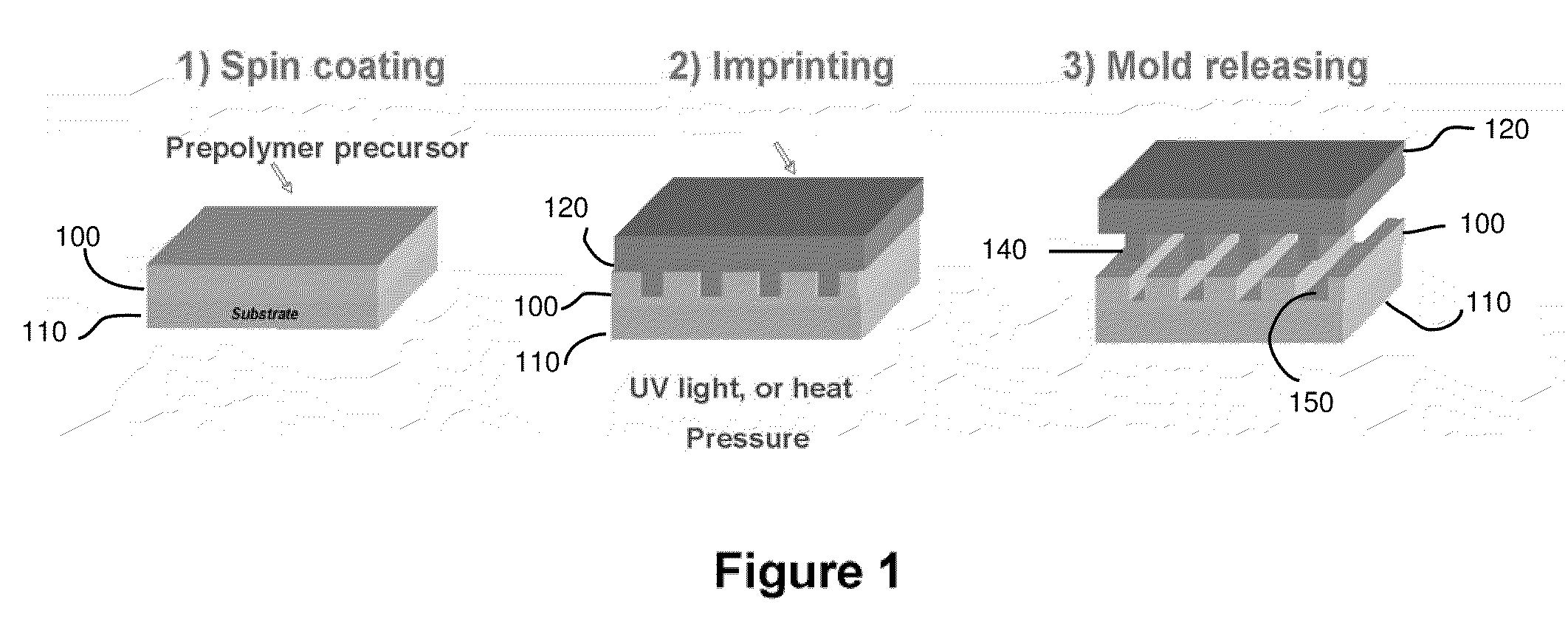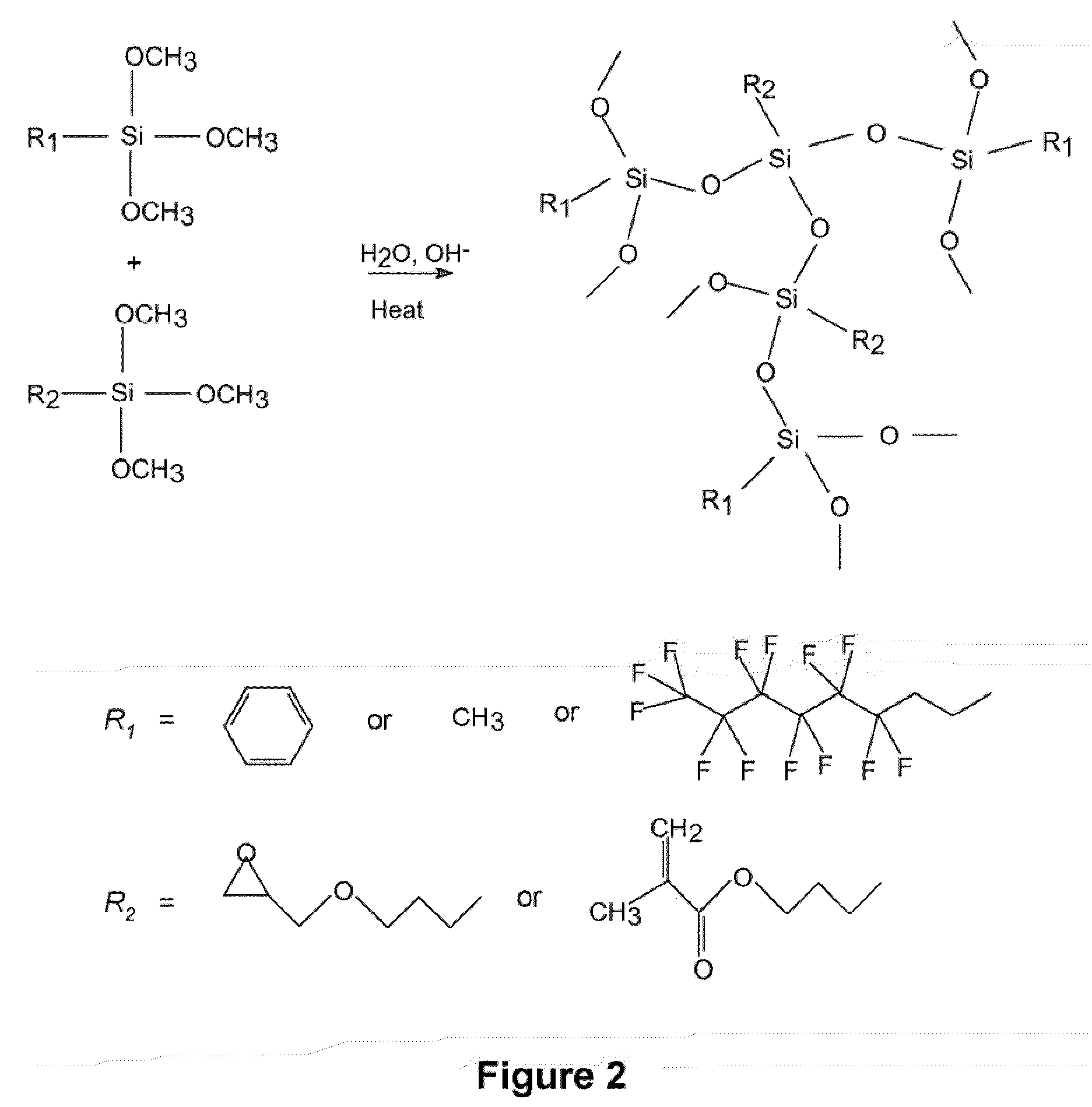UV Curable Silsesquioxane Resins For Nanoprint Lithography
a technology of nanoprint lithography and resins, which is applied in the field of micro- and nanostructure fabrication, can solve the problems of high pressure and long imprinting time, inconvenient nanoprinting techniques, and significantly affect throughput, so as to improve compositions and methods for nanoprint lithography
- Summary
- Abstract
- Description
- Claims
- Application Information
AI Technical Summary
Benefits of technology
Problems solved by technology
Method used
Image
Examples
example 5
[0130 from Table 1. Synthesis of poly(phenyl-co-3-mathacryloxypropyl)silsesquioxane, TPh0.4TMA0.6.
[0131]To a 1 L 3-neck round-bottomed flask equipped with a mechanical stir shaft, a Dean-Stark trap with a condenser, and a mixture of nitrogen / air inlet and outlet, was added 80 g of toluene, 0.60 mol of 3-methacryloxypropyltrimethoxysilane, 0.40 mol of phenyltrimethoxysilane, 2.40 mol of water, 1 g of CsOH aqueous solution (50 wt %). After the solution was refluxed for 1 h under stirring, part of the solvent was removed via the Dean Stark trap. After most of the methanol was removed, the solution became cloudy. Solvent was continuously removed and the solution became clear again when most of the water was removed through a Dean-Stark trap. The temperature was slowly raised to about 105° C. in about 1 h while methanol and water were being removed. This clear resin solution was cooled to 50° C. and diluted to about 15 wt % by adding toluene. The solution was acidified by adding acetic a...
example 8
[0132 from Table 1. Synthesis of poly(phenyl-co-3-glycidoxypropyl-co-1H,1H,2H,2H-perfluorooctyl)silsesquioxane, TPh0.4TEp0.5TFluo0.1.
[0133]To a 1 L 3-neck round-bottomed flask equipped with a mechanical stir shaft, a Dean-Stark trap with a condenser, and a nitrogen inlet and outlet were added 0.4 mol of phenyltrimethoxysilane, 0.5 mol of 3-glycidoxypropyl trimethoxysilane, 0.1 mol of 1H,1H,2H,2H-perfluorooctyltriethoxysilane, 180 g of toluene, 4 mol of water and 0.001 mol of tetramethylammonium hydroxide. After the solution was refluxed for 2 h while stirring, part of the solvent was removed. The temperature was increased by further removing the solvent. The solution was then cooled to 50° C. and diluted with toluene. Then, the dilute solution was acidified with acetic acid and allowed to stir for about 15 min. The solution was washed with deionized water. The mixture was then transferred to a separation funnel and the lower water layer was discarded. After the upper layer was furth...
PUM
| Property | Measurement | Unit |
|---|---|---|
| Temperature | aaaaa | aaaaa |
| Length | aaaaa | aaaaa |
| Pressure | aaaaa | aaaaa |
Abstract
Description
Claims
Application Information
 Login to View More
Login to View More - R&D
- Intellectual Property
- Life Sciences
- Materials
- Tech Scout
- Unparalleled Data Quality
- Higher Quality Content
- 60% Fewer Hallucinations
Browse by: Latest US Patents, China's latest patents, Technical Efficacy Thesaurus, Application Domain, Technology Topic, Popular Technical Reports.
© 2025 PatSnap. All rights reserved.Legal|Privacy policy|Modern Slavery Act Transparency Statement|Sitemap|About US| Contact US: help@patsnap.com



